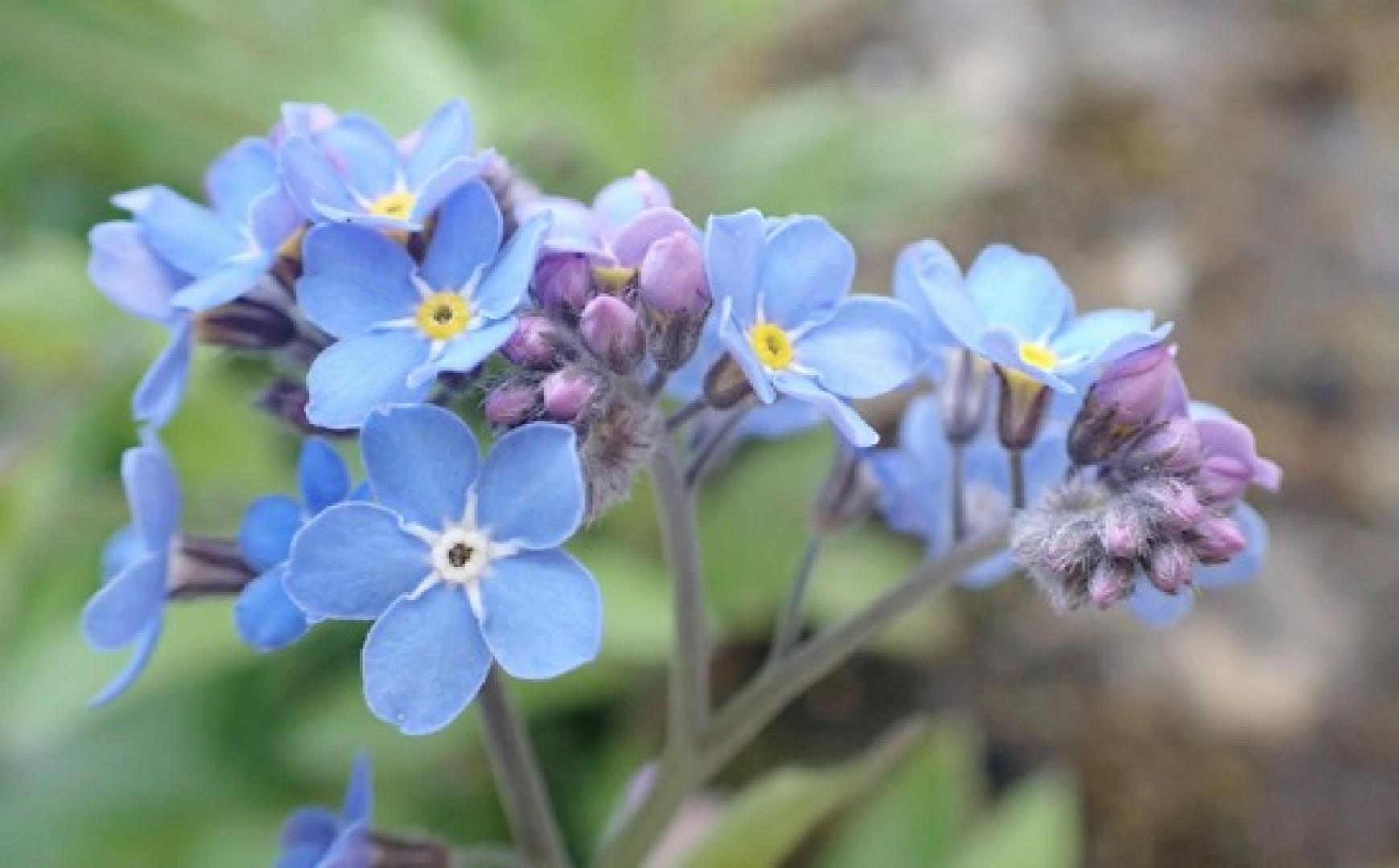Forget-me-nots (Myosotis)
The brook that mirrored clear the sky
Full well I know the spot;
The mouse-ear looked with bright blue eye,
And said “Forget-me-not.”
And from the brook I turned away,
But heard it many an after day
John Clare
THE name myosotis comes from the ancient Greek “mouse’s ear” , derived from the leaves which the foliage is thought to resemble. Other common names include Bird’s eye, Robin’s eye, Snake-grass and Love-me.
There are several different species of forget-me-not to be found ranging from the water forget-me-nots along the riversides, to the rare alpine forget-me-not high up in the fells. Easily recognisable with their attractive blue inflorescences, the finer details such as size and colour of flower, degree of hairiness on the plants and the shape of the hairs on the calyx are all important in determining which species we are identifying.
Although each individual flower is very small and not easily spotted by passing insects, the mass of blue flowers which form the inflorescence are much more visible. The helical shape of the developing flower head is reminiscent of a scorpion’s tail, one of a number of explanations for the common name scorpion grass.
Five china blue petals meet in the middle of each flower forming a raised star in gold, cream or white. White streaks run down the edges of each petal to complete the exquisite design of these tiny flowers. It is hardly surprising that images of forget-me-nots are found so frequently in embroidery and paintings. The central raised areas are called scales and are thought to guide and support the pollinating insects as they move down into the flower.
The wood forget-me-not (myosotis sylvatica) is one of the largest of the species. The tall erect plants with sturdy leaves are to be found growing among the emerging bracken croziers and other greenery of the forest floor.
The lovely pale blue flowers stand out in the shade of the wood and do not need the darker blue of many of their relations. The wood forget-me-not is the ancestor of many of the garden varieties of the species. Their seeds form in small fruits along the stem which attach to passing animals when brushed against, eventually falling off, allowing the small seed within to germinate elsewhere.
According to the Elizabethan herbalist Gerard, it was believed that forget-me-nots cured scorpion bites, so he named the flower scorpion grass. Perhaps not so useful, since scorpions aren’t common in England. However, some varieties of the flower were made into syrups for treating coughs and other lung diseases. Forget-me-not often symbolises loyalty and faithful love.
There are many stories which explain the origins of the name. A German folktale perhaps the most dramatic. A knight falls into the river whilst picking forget-me-nots for his beloved.
Sadly he was wearing armour at the time and was swept into the swirling current but not before managing to call out “vergiss mein nicht” [forget-me-not], throwing the posy of forget-me-nots back to his fair lady as he disappeared into the deep.
Forget-me-nots are members of the borage family (boraginaceae), which includes well known species such as borage itself, lungwort, comfrey and blue-eyed Mary. The plants always have hairy or even bristly foliage and frequently blue/red flowers.
The variations in flower colour in this interesting family are caused by a group of chemicals called anthocyanins. These pigments change colour according to the pH of the plant cells. As cells in the flowers age, they become more alkaline and this causes the anthocyanins to change from red to blue. The best example of this colour change is in the lungwort group .
As the flower ages it changes colour, signalling to the insects that it no longer makes nectar. However, having those older flowers remain makes the inflorescence look bigger and more attractive to the bees as a whole.
Lizzie Maddison is a member of the Upper Teesdale Botany Group
(Ref: New Flora British Isles Stace; Woodland Plants H&R.Tanner; Flora Britannica R. Mabey.)






